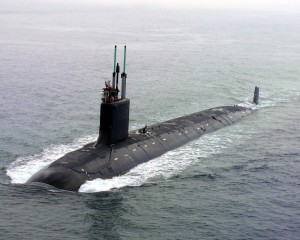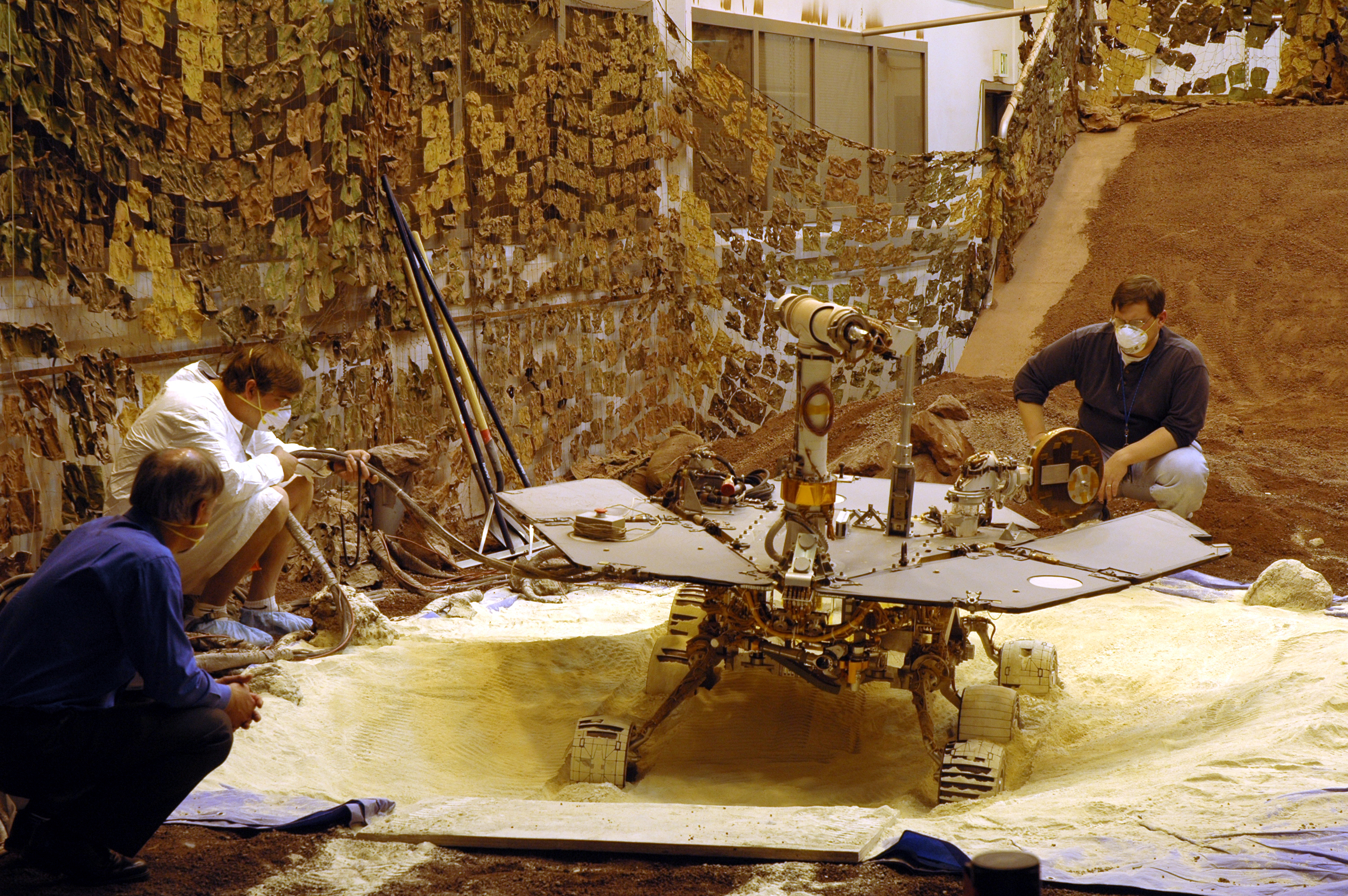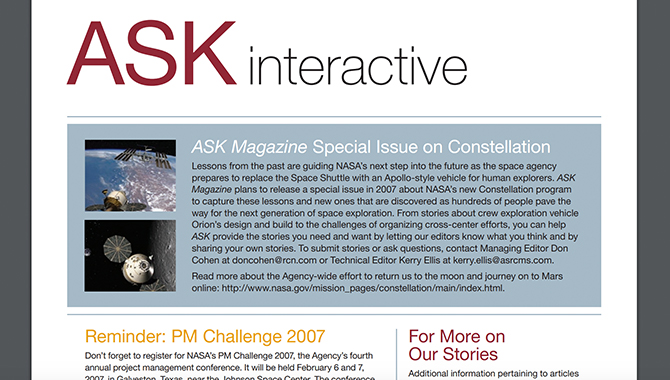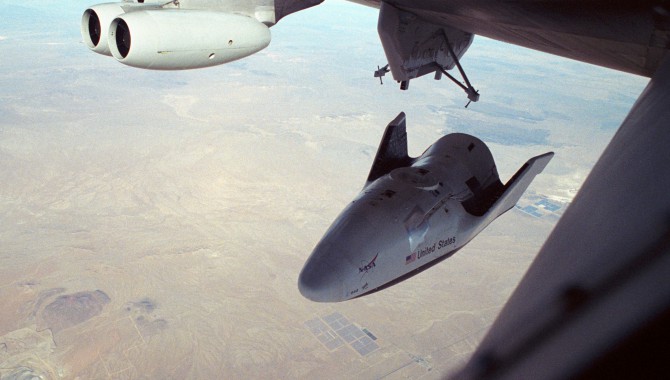
By Vincent J. Bilardo, Jr.
To support the Next Generation Launch Technology Program and the Constellation Systems Program, twenty seasoned program managers and systems engineers from the aerospace industry, academia, and government joined together to create the NASA Organization Design Team (ODT). The team conducted a series of workshops, surveys, interviews, and studies to discover and describe the essential elements of successful programs. As a result of this work, we believe that the following seven key principles are critical to program and project success.
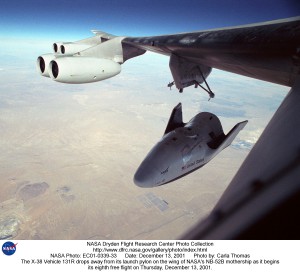 Principle 1: Establish a Clear and Compelling Vision
Principle 1: Establish a Clear and Compelling Vision
Creating a clearly defined vision of the future that inspires and motivates the workforce is an important first step on the path to project success. An effective vision statement should be vivid, concise, motivating, and memorable. Early in NASA’s history, President John F. Kennedy provided a clear goal to “land a man on the moon and return him safely to Earth.” NASA created the Mercury, Gemini, and Apollo programs to achieve that vision. The Apollo program required billions of dollars, millions of hours, and thousands of men and women, yet that simple goal drove the entire effort. For almost a decade, President Kennedy’s words pushed the space program forward.
A lack of vision can be disastrous. In its 2003 report, the Columbia Accident Investigation Board (CAIB) noted the lack of a national mandate for NASA over the past three decades. According to the report, this absence contributed to NASA’s failure to receive budgetary support, which resulted in an Agency struggling to do “too much with too little.”(1) Without a compelling goal, successive Administrations and Congresses were unwilling to commit the billions of dollars required to develop the next generation of space transportation.
Principle 2: Secure Sustained Support from the Top
Maintaining top-level support for large programs requires developing and sustaining “program protectors” inside and outside an organization. Managers should also establish effective working relationships with key stakeholders. A home division CEO protected Lockheed Martin’s stealth fighter prototype by setting up special financing to maintain the secrecy of the special project for which Lockheed’s “Skunk Works” became famous.(2) This allowed the project to be autonomous and prevented other interests at the company from interfering with the work in progress.
A lack of “protectors” has caused many programs to fail or be cancelled. The X-38 project could not survive changes to project requirements because it lacked a top-level protector.(3) The Advanced Launch System and National Launch System programs also suffered from poor support. These programs began during President Reagan’s Space Defense Initiative (SDI). When President Bill Clinton took office, he de-emphasized the SDI and eliminated the heavy lift requirement that had founded the initiative. The program was later cancelled despite five years of intense effort by major aerospace companies.(4)
Principle 3: Exercise Strong Leadership and Management
Strong leadership requires managers to identify and develop other leaders and technical staff, define clear lines of authority, demand accountability, implement sound project management practices, and demonstrate uncompromising ethical standards. As Dr. Wernher von Braun — a key leader of the Apollo program — often emphasized, you should hire people smarter than you and give them the responsibility and resources needed to accomplish the task.(5) This allows managers to focus on the program as a whole, a crucial perspective for leadership to maintain.
John Muratore, X-38 project manager, emphasized that strong project leaders should also resist the rush to flight until all technical and safety issues have been resolved.(6) The X- 38 management team delayed their flight test program to allow for more aerodynamic analysis. They would not proceed to the next flight test until they had completed the analysis and run it by an independent review team. As a result of Muratore’s “test before you fly” approach, the project had two perfect flights.
This uncompromising integrity for project performance also requires ethical behavior from managers. Team members will not follow a leader they know is capable of unethical behavior and decision making. Lack of integrity fosters cynicism among the team and can compromise the mission.
Principle 4: Facilitate Wide-Open Communication
Fostering open communication has always been a cornerstone of good project management, but it can be — and has been — stifled by leaders who do not want to hear bad news. As a result, the bearers of bad news learn to stop communicating problems upward. Not listening is bad; criticizing anyone who brings to light unpleasant, but necessary, information is worse. Few individuals will dare come forward with critical information if they know they are likely to suffer public criticism.
Dr. William Starbuck of New York University identified several other reasons why organizations suppress communication and have trouble learning from both success and failure.(7) Organizations tend to overlearn and repeat behaviors that result in success, which can cause inflexibility when new problems require different approaches. But organizations also have trouble learning from failure, often writing off failures as idiosyncratic and overlooking possible systemic causes. This tendency, known as the “normalization of deviance,” was evident in the Space Shuttle Challenger accident.(8)According to the CAIB report, faulty communication also contributed to the loss of Space ShuttleColumbia.
Principle 5: Develop a Strong Organization
Dr. Starbuck emphasized that organizations can remain effective over long periods if three interdependent pillars — culture, rewards, and structure — are carefully designed and aligned.(9) The National Polar-orbiting Operational Environmental Satellite System was an outstanding example of careful organization design and culture management.(10) The program intentionally sought to create a new culture by collocating personnel from the program’s three contributing agencies: Department of Defense, National Oceanic and Atmospheric Administration, and NASA. They carefully negotiated respective roles and responsibilities before staffing and initiating program office operations. In this way, they carefully removed as many potential organizational conflicts and barriers as possible before executing the program.
The Virginia Class Submarine program, according to deputy program manager George Drakeley, is a good example of a strong organizational architecture that aligned well with the product being produced. This program structured itself around the Integrated Product and Process Development acquisition methodology, which the Department of Defense developed in the 1990s to streamline major weapons systems acquisition. The payoffs of this approach included a shortened overall design schedule, a reduced number of change orders because they encountered fewer problems during construction, reduced cost in vehicle production, and an operational weapon system that effectively balanced capability and flexibility with cost.
Principle 6: Manage Risk
NASA has always taken risk into account when pursuing a mission. In the early days of Apollo, management required quantitative estimates for these risks. However, during the later Apollo era and the shuttle era, NASA relied primarily on qualitative — or “gut check” — measures to estimate and control mission success and safety risk.(11) As a result, NASA began to address other risks qualitatively, including cost and schedule. The Agency used bottom-up, judgmentally based approaches, which were not tied directly to technical risks that were often the causes of mission loss. Using quantitative models of potential accident scenarios as well as developed operational data and physical models of relevant phenomena is necessary for managing safety and mission risk on a continual basis.(12)
Professor Elisabeth Paté-Cornell indicated that one of the most valuable lessons learned from her work on the Space Shuttle and elsewhere was the importance of continuously collecting operational data and embedding it into a risk-based structure. Doing this provides an ongoing or “living” measure of the residual risk in continuing operations. The Concorde’s crash on July 25, 2000, provides an example of how this data might have been used to forestall failure. During 75,000 hours of previous Concorde operation, fifty-seven tires had burst and debris had come close to penetrating the fuel tank several times. Using a “living accident precursor” system had proven valuable in hospital anesthesia, the Ford/Firestone Explorer tire failure, and the Boeing 737’s leading edge.
Principle 7: Implement Effective Systems Engineering and Integration
The final key principle comprises several subprinciples:
- Develop clear, stable objectives and requirements from the outset.
- Establish clear and clean system interfaces.
- Maintain effective configuration control.
- Use modern information technology and analytical tools to model and simulate system performance, including organizational performance, well in advance of hardware development.
The very nature of developmental programs implies the outcome is, at least to some degree, uncertain. Shifts in objectives result in increased requirements. These shifts and resulting requirement changes lead to program delays, cost increases, and even program failure or cancellation. In successful programs, systems engineering and integration (SE&I) establishes a clear and stable set of objectives at the outset and develops a minimal set of requirements to achieve those objectives. Several programs limited top-level program requirements to one page. The F-117A program (13) had only five requirements. Muratore advised against writing documents just to fill in the squares and recommended carefully controlling and tracking interfaces.(14)In addition to clean product and system interfaces, many presentations given in the ODT’s workshops emphasized the importance of establishing clear and clean organizational interfaces. Specifically, they stressed designing an organization’s structure to mirror the architecture of the system being developed.Once the program objectives, requirements, and interfaces are solidified, they must then be controlled by establishing an early program baseline around them. The SE&I effort must keep the design team on track and be continually vigilant against “requirements creep.” Shifting requirements ultimately led to the demise of the National Aerospace Plane program, which started in 1984 as a single stage-to-orbit technology demonstrator but ended in 1993 as a collection of various hypersonic technology development activities.(15)
- Monitoring requirements and risk with modern information technology and analytical tools can help reduce what was once a very labor-intensive process. The Virginia Class Submarine program used a single electronic database to integrate all aspects of design, planning, and construction. The team used the database to link design with production and business operations, providing a fully integrated data set throughout the program’s life cycle.(16) This database also enhanced the effectiveness of early developmental hardware/ software-in-the-loop testing.
Creating Your Own Success
While there is no set formula to guarantee program and project success, the ODT’s efforts have defined a firm foundation on which leaders can build. Learned from the unfailing teachers of experience and error, these principles are a starting point on the road to success. But more important than discovering what aids success and what cripples it is capturing those discoveries, sharing them with other leaders, and ensuring they are understood by everyone on the project team. The ODT’s robust efforts have done just that, and the results will benefit more than the next generation of space exploration for which it was formed.
Note: The above article is a summary of a much larger study. A link to the full report can be found on our “ASK Interactive” page in this issue.
2. Sherman Mullin, “Lockheed Skunk Works Program Management with Focus on the F-117 Stealth Fighter Program,” presented at ODT Workshop VI: Building a Historical Program Database, NASA Johnson Space Center, May 2004.
3. John Muratore, “X-38 Program System Engineering Lessons,” presented at ODT Workshop VI: Building a Historical Program Database, NASA Johnson Space Center, May 2004.
4. Darrell Branscome, “Advanced Launch System,” presented at ODT Workshop III: Organization Design and Best Practices, Williamsburg, VA, December 2003.
5. Dave Christensen, “Space Program Lessons Learned/Best Practices,” presented at ODT Workshop III: Organization Design and Best Practices, Williamsburg, VA, December 2003.
6. See note 3 above.
7. William Starbuck, “Keeping Organizations Effective Over the Long Run,” presented at ODT Workshop I: Tools and Methods for Organization Design and Analysis, NASA Langley Research Center, August 2003.
8. Diane Vaughn, Challenger Launch Decision: Risky Technology, Culture, and Deviance at NASA (University of Chicago Press: 1996).
9. See note 7 above.
10. Stanley Schneider, “National Polar-orbiting Operational Environmental Satellite System (NPOESS) Integrated Program Office,” presented at ODT Workshop III: Organization Design and Best Practices, Williamsburg, VA, December 2003.
11. K.P. Sperber, “Apollo Experience Report—Reliability and Quality Assurance,” NASA TN-D-7438, September 1973.
12. Elisabeth Paté-Cornell, “On Signals, Response, and Risk Mitigation: A Probabilistic Approach to Precursors Detection and Analysis,” presented at ODT Workshop I: Tools and Methods for Organization Design and Analysis, NASA Langley Research Center, August 2003.
13. See note 2 above.
14. See note 3 above.
15. Ming Tang, “National Aerospace Plane Organization and Management,” presented at ODT Workshop III: Organization Design and Best Practices, Williamsburg, VA, December 2003.
16. George Drakeley, “Virginia (SSN 774) Class Submarine Program,” presented at ODT Workshop VI: Building a Historical Program Database, NASA Johnson Space Center, May 2004.






